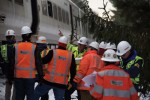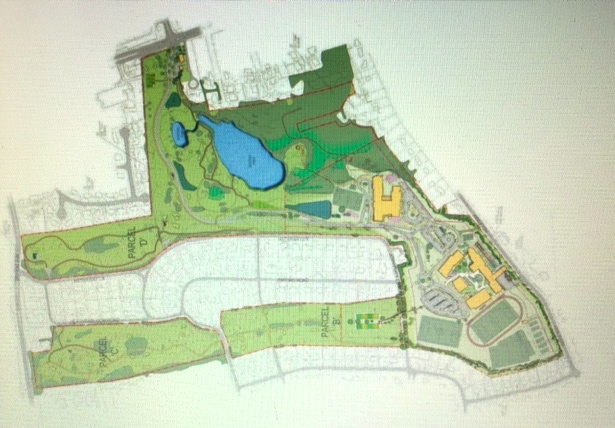Pols Focus on Funding Rail Crossing Improvements

One year after the worst Metro-North accident in history, millions in federal dollars are on the verge of being sent to the states to enhance safety at railroad crossings throughout the nation, including potentially in Westchester.
Rep. Nita Lowey (D-Harrison) and Rep. Sean Patrick Maloney (D-Cold Spring) were joined Monday morning by Federal Railroad Administration (FRA) Administrator Sarah Feinberg on a conference call to outline the efforts underway to make grade crossing improvements.
“We must continue working together to ensure these horrific accidents don’t devastate more lives,” said Lowey, the ranking member on the House Appropriations Committee.
Last Feb. 3, six people were killed and 15 were injured when an SUV crossed into the path of a Metro-North train at Commerce Street in Valhalla.
Within the past few months, Congress appropriated $350 million from the Highway Safety Improvement Program to help communities across the United States pay for improvements at dangerous crossings across the United States, Lowey said. States will be able to submit applications to the federal government to share in that money.
Another $6.5 million has been set aside for a public education and awareness campaign, she said.
Funding for $50 million in railroad safety grants will also be available, half of which will go toward positive train control technology that helps operators slow down trains on difficult curves of it senses something is on the track. The other half of that money will be for railroad infrastructure improvements.
While officials did not mention when the $350 million will be released to the states, Feinberg noted that it should happen soon.
“We are working diligently to execute and get that money out the door,” Feinberg said. “In terms of the public education campaign we’ll work closely with our colleagues…to help that campaign.”
That money does not include $1 billion in federal loans granted to Metro-North to help the commuter railroad install positive train control, said Maloney, a member of the House Transportation and Infrastructure Committee who has been instrumental in advocating for the technology. Railroads have until 2018 to have positive train control installed.
The MTA is studying all of its Metro-North and Long Island Railroad crossings – more than 430 of them – in its jurisdiction.
Maloney said 95 percent of all railroad deaths occur at crossings. However, while crossing accidents have been decreasing nationwide, in New York State mishaps are on the rise at its 5,304 crossings.
“The local communities have a useful role advocating for changes that make sense to them,” Maloney said.
New York State has also increased funding by more than 50 percent to improve crossings for this year. The state has set aside $9.8 million for 2016, compared to $6.1 million last year.
Despite the money that is supposed to flow from Washington and Albany, Feinberg acknowledged Monday that there have been no improvements at the Commerce Street Crossing during the past year. Feinberg said the investigations by the FRA and the National Transportation Safety Board (BTSB) are ongoing and that equipment or structural changes are prohibitively expensive.
“The equipment can sometimes (cost) into the millions of dollars, and if we’re talking about a grade separation, actually separating the roadway, the automobiles and the vehicles from ever interacting with the railroad track or (eliminating) the possibility of interacting with the trains, that’s millions and millions of dollars,” Feinberg said.
One community that sounded warnings over an unsafe crossing within weeks of last year’s accident was the Town of New Castle. Supervisor Robert Greenstein said his office has been working with state Sen. Terrence Murphy (R-Yorktown) to get the Roaring Brook Road crossing in Chappaqua onto the state’s Transportation Improvement Program list. Town officials hope to meet with the state to discuss improvements at Roaring Brook Road.
He said keeping the spotlight on improving safety is crucial to seeing improvements materialize.
“We’re at the one-year anniversary and while you don’t want to exploit the tragedy, it is a chance to talk about the issue again,” Greenstein said.
Meanwhile, in Mount Pleasant, town officials are awaiting reports from the NTSB and its own engineer before deciding on whether to call for the closing of Commerce Street or one of the town’s other three grade crossings.

Martin has more than 30 years experience covering local news in Westchester and Putnam counties, including a frequent focus on zoning and planning issues. He has been editor-in-chief of The Examiner since its inception in 2007. Read more from Martin’s editor-author bio here. Read Martin’s archived work here: https://www.theexaminernews.com/author/martin-wilbur2007/

